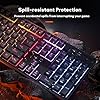Table of Contents
Improving Finger Independence on the Piano
Mastering the piano requires not just the ability to read music and an understanding of the instrument, but also a high degree of control over each individual finger. Finger independence is a crucial skill for pianists, enabling them to execute complex pieces with precision and fluidity. Enhancing this aspect of piano technique involves dedicated exercises and mindful practice. This introduction explores the foundational approaches essential for developing stronger, more independent fingers that can move freely and effectively across the keys.
Exercises to Strengthen Individual Fingers
1. Five-Finger Scales: Start by playing scales using only one hand at a time, allowing each finger to feel the weight of the keys. Start slowly, pressing each key with deliberate pressure, ensuring that each finger gets an equal workout. Gradually increase the speed as control and comfort improve. This not only strengthens the fingers but also aids in developing muscle memory for each finger’s position.
RockJam RJ761 61 Key Keyboard Piano with Keyboard Bench, Digital Piano Stool, Sustain Pedal, Headphones & Lessons
$159.37 (as of December 27, 2025 21:36 GMT -08:00 - More infoProduct prices and availability are accurate as of the date/time indicated and are subject to change. Any price and availability information displayed on [relevant Amazon Site(s), as applicable] at the time of purchase will apply to the purchase of this product.)YAMAHA P71 88-Key Weighted Action Digital Piano with Sustain Pedal and Power Supply (Amazon-Exclusive)
6% OffDonner DEP-20 Beginner Digital Piano 88 Key Full Size Weighted Keyboard, Portable Electric Piano with Furniture Stand, 3-Pedal Unit
15% OffDonner Digital Piano Keyboard Velocity-Sensitive 88 Keys with Removable Piano Stand, Compact Beginner Home Electric Piano with Split Mode, LED Digital Tube for Display, and Triple Pedal DEP-08
15% Off2. Hanon Exercises: The Hanon exercises are specifically designed to improve piano technique, finger dexterity, and strength. Exercise No. 6 from “The Virtuoso Pianist” by Charles-Louis Hanon focuses on strengthening the fourth and fifth fingers, which are typically the weakest. The repetitive nature of these exercises makes them particularly effective for building strength and independence.
3. Thumb Under Drills: Play a C major scale at a comfortable tempo. As you reach the third finger, practice smoothly tucking the thumb under to reach the next note of the scale. This drill helps strengthen the thumb and improve its ability to move independently while maintaining a legato sound. Repeat the scale using different dynamics to further increase finger control.
4. Accenting Notes: While playing scales or a simple melody, accent a different finger each time. For example, accent the second finger every note it plays. This practice not only strengthens weaker fingers but also gives them a better sense of timing and dynamics.
5. Finger Isolation Exercise: Isolate each finger by holding down all other fingers except the one being exercised. Start with the thumb of either hand, press down a key, and hold it for a few seconds before releasing. Repeat this with each finger. This exercise is excellent for building strength and control in each individual finger, as well as for identifying which fingers are weaker and need more attention.
Piano for Beginners - Learn to Play Christmas Carols: The Ultimate Beginner Piano Songbook for Kids with Lessons on Reading Notes and 32 Beloved Songs (My First Piano Sheet Music Books)
$14.99 (as of December 23, 2025 20:40 GMT -08:00 - More infoProduct prices and availability are accurate as of the date/time indicated and are subject to change. Any price and availability information displayed on [relevant Amazon Site(s), as applicable] at the time of purchase will apply to the purchase of this product.)Scales and Finger Exercises for Piano | Classical Technique Sheet Music Book for Beginners and Intermediate Players | Major and Minor Scales and ... Library of Musical Classics, 2107)
28% OffExercises for Independence of Fingers - Book 2: Piano Technique (Piano Methods, Studies, and Exercises)
7% OffHow to Play the Piano: Chords Method, Level 2 (The Fingerprint Method)
$23.99 (as of December 21, 2025 00:07 GMT -08:00 - More infoProduct prices and availability are accurate as of the date/time indicated and are subject to change. Any price and availability information displayed on [relevant Amazon Site(s), as applicable] at the time of purchase will apply to the purchase of this product.)6. Staccato Touches: Practice playing notes in a staccato manner using only one finger at a time. This helps to work on the finger’s lifting motion, which is pivotal for developing speed and lightness of touch. It is also beneficial for building precision and timing.
7. Octave and Chord Stretching: Play octaves or chords slowly, focusing on stretching the fingers as far apart as comfortably possible. Hold each stretch for a few seconds before relaxing. This exercise not only strengthens the fingers but also increases flexibility, which is essential for playing more extensive repertoire pieces.
Practicing Scales to Enhance Finger Independence
Mastering scales on the piano is crucial for building finger strength and independence. It allows each finger to become equally agile and responsive on the keyboard. Here are detailed ways to practice scales to enhance finger independence:
Begin with major and minor scales in both hands, playing at a slow tempo. Focus on ensuring that each finger presses the keys with equal pressure and precision. Gradually increase the tempo as your fingers become more confident and independent.
Contrary motion scales involve playing scales in both hands, moving in opposite directions. Start in the middle of the keyboard; one hand moves up the scale while the other moves down. This practice improves hand coordination and balances muscle development and finger independence.
Chromatic scales, which involve playing every half-step, boost dexterity and finger strength remarkably. Use a consistent fingering pattern, such as 1-3-1-3 for the right hand and 1-3-1-3 for the left, to ensure all fingers are utilized evenly.
Experiment with different rhythmic variations of the same scale. For instance, play scales in triplets, dotted rhythms, or syncopation to challenge and further develop finger independence. This variation forces fingers to adapt to different weight distributions and timing.
Practice scales with each hand separately at first. Once you’re comfortable, play them with both hands together. This progression from single-hand to both-hands aids in developing finger independence in a controlled manner. Focus on the weaker hand by giving it more practice time if necessary.
The Importance of Finger Placement and Hand Posture
Proper finger placement and hand posture are fundamental for improving finger independence on the piano. These elements not only affect the ease and accuracy of playing but also help in preventing strain or injuries. By understanding and implementing the right techniques, pianists can enhance their agility, speed, and precision.
Finger Placement: Each finger should find its position on the piano keys with curved, relaxed, and rounded fingers. Positioning the fingers close to the keys and using the fingertips to play helps in exerting the right amount of pressure and achieving a responsive touch. This is crucial for playing complex passages where finger independence is key. Keeping fingers ready and correctly aligned enables quicker and more independent movements.
Hand Posture: The hands should maintain a natural curve, resembling a dome shape over the keyboard. This hand posture allows for better control and flexibility, facilitating independent finger movement. The wrists should remain flexible but stable, enabling fluid movements across the keyboard without stiffness. A correct hand posture also contributes to optimal distribution of pressure through the fingers, which is essential for executing dynamic contrast and playing with expression.
How to Play Complex Passages with Ease
Mastering complex passages on the piano involves several focused techniques and practices. By improving finger independence and applying specific strategies, pianists can play these difficult sections with greater ease and musicality.
Slow Practice
One of the most effective methods to handle complex passages is through slow practice. This allows you to meticulously analyze each note, dynamic, and articulation without feeling rushed. Begin by practicing at a tempo where you can play the passage flawlessly, then gradually increase the speed as you gain confidence and accuracy.
Hands Separately
Practice hands separately to focus on the technical and musical challenges of each hand. By isolating the hands, you can pay closer attention to the role and movement of each finger, enhancing finger independence and coordination. Once each hand feels secure on its own, slowly begin to reintegrate them.
Use of Metronome
Incorporating a metronome is crucial in developing rhythmic precision and steady tempo. Start with a slow setting and only increase the speed once you can play the passage cleanly and accurately. The metronome helps in keeping your tempo consistent and discourages rushing through difficult parts.
Break Down the Passage
Divide complex sections into smaller, manageable chunks. Focus on mastering each small section before moving on to the next. This breaking down process not only makes the learning more manageable but also aids in memorizing the music effectively.
Finger Exercises
Regularly engage in finger exercises and scales designed to boost dexterity and independence. Consider exercises such as Hanon, Czerny or those from Chopin’s Etudes which are tailored to develop finger strength and agility across various patterns.
Visualization and Mental Rehearsal
Before playing, visualize yourself playing the passage successfully. Mental rehearsal can help in memorizing notes and fingering, and mitigate performance anxiety. It’s a technique often overlooked but incredibly effective, especially in performances.
Regular Breaks and Consistent Practice
Ensure you take regular breaks during practice sessions to prevent fatigue and maintain high concentration levels. Consistent short practices are generally more effective than occasional long sessions, as they help build muscle memory steadily over time.
Use of Articulation and Dynamics
Focus on articulation and dynamics early in the learning process. These are not just expressive elements but also tools that help structurally and technically—how a passage should feel under the fingers and how it flows from one note to another.
Teacher or Mentor Consultation
If possible, consult a piano teacher or mentor who can provide personalized feedback and suggestions. They can help with specific technical issues, interpretation, and provide exercises that target weaknesses in your playing.
Recording and Self-Review
Make recordings of your performances of the passage. Listening to your playbacks can provide insights into areas that need improvement that you might not notice in real-time.
Techniques to Avoid Finger Fatigue
Proper Hand Positioning: Maintaining the correct hand posture is crucial to avoid straining your fingers. Ensure your wrists are not too low or too high, aligning them with the keyboard to facilitate a natural, relaxed motion in your fingers. This positioning aids in reducing tension and preventing fatigue during extended playing.
Regular Breaks: Taking regular breaks is essential to prevent overworking the muscles in your fingers and hands. Practicing in shorter intervals, such as 20-30 minute sessions with 5-10 minute breaks in between, can help maintain your energy levels and reduce the risk of fatigue.
Gradual Increase in Practice Time: Instead of jumping into long piano sessions, gradually increase your practice time. Start with shorter sessions and incrementally add more time as your fingers build stamina and strength. This method helps prevent the onset of fatigue and builds endurance progressively.
Focus on Finger Stretches: Stretching your fingers before, during, and after practicing can significantly reduce tension. Gentle stretches and massaging the fingers promote blood circulation and flexibility, which are key to preventing cramps and fatigue.
Strength-Building Exercises: Incorporate specific exercises aimed at strengthening your fingers. Techniques such as playing scales, arpeggios, or using finger-strengthening tools can build the muscles in your fingers, making them more resilient to fatigue.
Stay Hydrated: Hydration plays a pivotal role in muscle health. Ensure you drink adequate water to keep your muscles hydrated and efficient, reducing the likelihood of fatigue due to dehydration.
Conclusion
Improving finger independence on the piano is crucial for mastering complex musical compositions and enhancing overall playing technique. By incorporating daily exercises such as Hanon exercises, practicing contrary motion scales, and utilizing finger-strengthening tools, pianists can develop stronger, more agile fingers. Consistent practice, combined with focused attention on individual finger movements and regular feedback from a professional, ensures steady progress and skill enhancement. Remember, patience and persistence are key in achieving significant improvements in finger independence.






















































